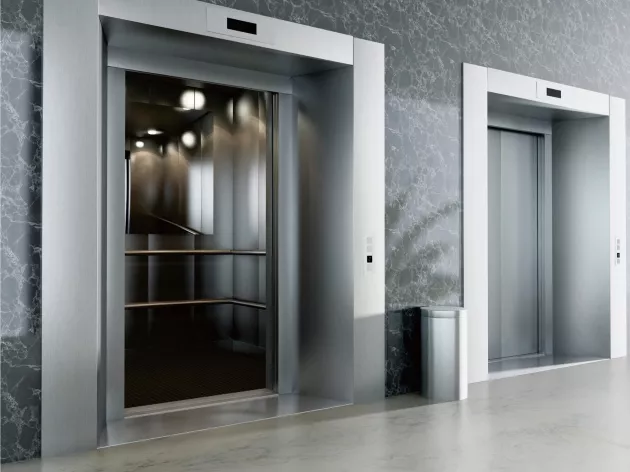The evolution of passenger elevators has been a cornerstone of urban development, enabling the rise of modern cities and skyscrapers. This article explores the critical role of passenger elevator manufacturer, their history, innovations, and the future of vertical transportation.
Historical Evolution of Passenger Elevators
The inception of passenger elevators can be traced back to the mid-19th century. Elisha Otis’s introduction of the safety elevator in 1853, with its groundbreaking safety brake system, was a pivotal moment that made vertical transportation in tall buildings feasible and safe. This innovation marked the beginning of the passenger elevator industry, setting the stage for the construction of taller and more ambitious structures.
Major Players in the Industry
Several key companies have shaped the passenger elevator industry, each bringing unique innovations and advancements:
- Otis Elevator Company: Pioneering in safety and efficiency, Otis continues to be a leader in the industry with its reliable and advanced elevator systems.
- Schindler Group: Known for its precision engineering and commitment to sustainability, Schindler has been at the forefront of green elevator technologies.
- ThyssenKrupp: Innovator of the MULTI elevator, which uses magnetic levitation to move cars both vertically and horizontally, offering new possibilities for building design.
- KONE: A leader in eco-efficient solutions, KONE integrates smart technologies to improve elevator performance and user experience.
- Mitsubishi Electric: Renowned for high-speed elevators, Mitsubishi Electric serves some of the world’s tallest buildings, pushing the boundaries of speed and efficiency.
Technological Advancements
Passenger elevator manufacturers are continuously innovating to meet the demands of modern architecture and urbanization. Key advancements include:
- Ultra-High-Speed Elevators: To cater to the increasing height of skyscrapers, manufacturers have developed ultra-high-speed elevators that can travel over 20 meters per second, significantly reducing travel time for passengers.
- Double-Deck and TWIN Elevators: These systems increase passenger capacity and reduce waiting times by allowing two cars to operate in the same shaft. ThyssenKrupp’s TWIN system, for example, has two independent cars in one shaft, optimizing space and efficiency.
- Smart and Connected Elevators: The integration of Internet of Things (IoT) technology allows for real-time monitoring, predictive maintenance, and enhanced user interfaces. Smart elevators can adjust to traffic patterns and provide a more personalized experience.
- Touchless Technology: In response to health concerns, manufacturers are developing touchless control systems using voice commands, smartphone apps, and gesture recognition to enhance passenger safety and convenience.
Safety and Regulatory Compliance
Safety is a paramount concern in the elevator industry. Manufacturers adhere to stringent safety standards and regulations to ensure passenger protection. Innovations in safety include:
- Advanced Braking Systems: To prevent free fall in case of cable failure.
- Seismic and Fire-Resistant Designs: Elevators designed to withstand earthquakes and fires, ensuring passenger safety in emergencies.
- Real-Time Monitoring: Continuous monitoring systems that detect and alert for any abnormalities, ensuring prompt maintenance and minimizing risks.
Regulatory bodies like the American Society of Mechanical Engineers (ASME) and the European Committee for Standardization (CEN) provide guidelines and standards that manufacturers must follow, ensuring consistent safety and performance across the industry.
Sustainability in Elevator Manufacturing
With a growing emphasis on sustainability, elevator manufacturers are focusing on reducing the environmental impact of their products. Key initiatives include:
- Energy-Efficient Drives: Regenerative drives that capture and reuse energy during operation, significantly reducing energy consumption.
- Eco-Friendly Materials: The use of sustainable and recyclable materials in elevator construction.
- Green Building Integration: Elevators designed to contribute to the overall energy efficiency of green buildings, supporting certifications like LEED.
Future Trends in Passenger Elevators
The future of passenger elevators is being shaped by rapid technological advancements and an increasing focus on sustainability. Emerging trends include:
- Artificial Intelligence: AI-powered elevators that optimize traffic flow, reduce wait times, and predict maintenance needs.
- Multi-Directional Elevators: Systems like ThyssenKrupp’s MULTI that can move horizontally and vertically, enabling new architectural possibilities.
- Personalized User Experience: Elevators that can recognize and adapt to individual user preferences, offering a tailored travel experience.
- Integration with Smart Cities: Elevators becoming an integral part of smart city infrastructure, communicating with other building systems to enhance overall efficiency and user experience.
Conclusion
Passenger elevator manufacturers are at the forefront of urban innovation, constantly pushing the boundaries of what is possible in vertical transportation. Through a commitment to safety, efficiency, and sustainability, these manufacturers are not only enabling the construction of taller buildings but also enhancing the quality of life for millions of people around the world. As cities continue to grow vertically, the role of passenger elevator manufacturers will be more crucial than ever, ensuring that we can navigate our urban landscapes swiftly, safely, and sustainably.
4o

